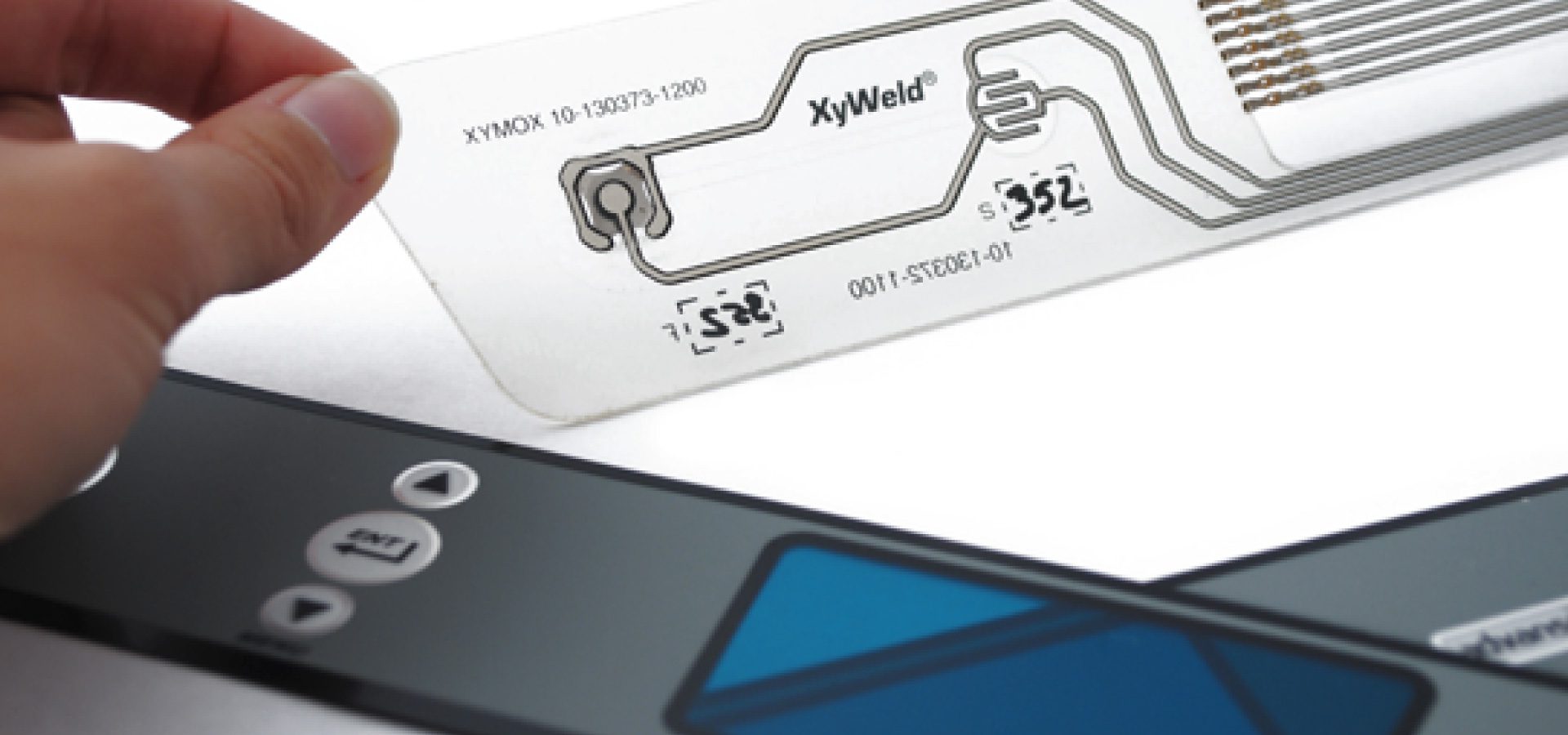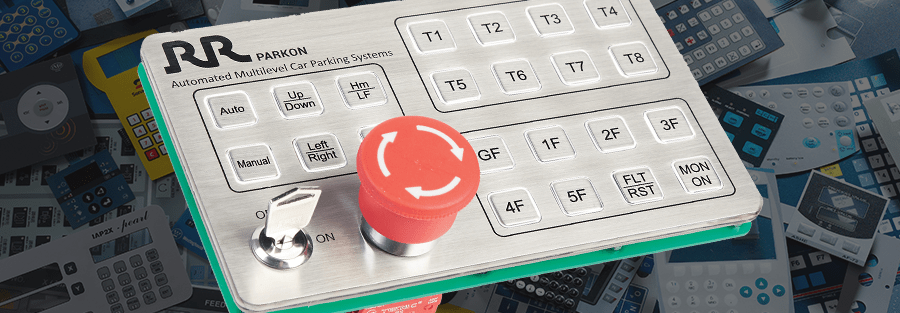The Ultimate Source on Membrane Layer Switches Over: Layout, Performance, and Applications
Membrane switches over act as an intriguing crossway of layout and capability, playing a pivotal role in contemporary interface throughout numerous fields. This source unpacks the necessary parts that add to their performance, consisting of visuals overlays and circuit traces, while additionally clarifying the systems behind their stress activation. As we explore the diverse applications of membrane switches, it ends up being apparent that their versatility and toughness are important in settings varying from medical care to customer electronics. The nuances of their layout and functional principles may disclose also deeper understandings worth considering.

Understanding Membrane Layer Buttons
Membrane buttons are a sort of customer interface innovation extensively utilized in various digital devices, defined by their slim, flexible style and functionality. These switches consist of several layers that include visuals overlays, sticky layers, and circuitry, allowing a reliable and portable user interface for individuals. They can be discovered in devices, clinical devices, and industrial control panels, providing a reputable method for customer communication.
One of the key benefits of membrane switches is their capability to stand up to pollutants such as dust and dampness, making them ideal for settings where resilience is crucial. Their low-profile layout enables for seamless integration right into different applications, while the adjustable visuals overlays boost individual experience by giving clear visual feedback. Additionally, membrane buttons can accommodate a variety of innovations, such as tactile feedback and backlighting, additional improving their use.
The manufacturing procedure for membrane changes generally involves screen printing, lamination, and die-cutting methods, making sure precision and consistency in manufacturing. Generally, membrane layer switches stand for a efficient and functional service for modern-day electronic gadgets, incorporating performance with visual appeal in user interface style.
Key Elements and Style Aspects
A variety of essential components and style components integrated to create an efficient membrane layer switch. At the core, the graphic overlay offers both visual and functional purposes, supplying an easy to use user interface while safeguarding inner parts from ecological aspects. The selection of materials, commonly polyester or polycarbonate, influences durability and tactile feedback.
Below the overlay, the adhesive layer makes certain the button sticks firmly to the substrate, which can be plastic, glass, or steel. The spacer layer is crucial, as it maintains the necessary gap in between the circuit and the overlay layers, enabling for efficient actuation. Membrane Switches. Circuit traces, typically made from conductive ink or adhesive, are published on a flexible substratum, allowing electric signals to be transmitted when stress is used
Layout factors to consider likewise include the setup of responsive domes or embossing that provide physical responses to the user, enhancing the overall experience. In addition, the design and spacing of the switches need to be maximized for ease of use, guaranteeing that customers can navigate the interface without effort. On the whole, these components and design components work synergistically to develop a reputable, functional membrane layer button tailored to certain applications.
Performance and Procedure System
At the heart of efficient capability for membrane switches over lies their operational system, which facilitates individual communication through a basic yet efficient design. These switches operate the principle of pressure activation, where a customer uses force to a marked area of the button (Membrane Switches). This action compresses the layers of the button, finishing an electrical circuit that sends a signal to the linked device
The building commonly includes a top graphic layer, a glue spacer layer, and a bottom circuit layer, which collectively develop a robust interface. go to my blog When stress is applied, the leading layer breaks down against the lower circuit layer, allowing conductive traces to link. This style not only allows clear tactile comments but also guarantees toughness and integrity, as the switches are often resistant to dust and dampness.
Furthermore, the adaptability of membrane changes allows for combination with various innovations, consisting of LED indicators and microcontrollers, improving their performance. By offering a streamlined user interface that minimizes mechanical wear, membrane switches stay a favored choice in applications varying from consumer electronic devices to commercial tools, making sure optimal efficiency and individual satisfaction across varied environments.
Kinds Of Membrane Layer Buttons

Another significant category is brightened membrane switches, which integrate backlighting to enhance exposure in low-light conditions. These switches are usually made use of in control panels and control panels where clear presence is vital.
Furthermore, there are customized membrane changes developed to fulfill particular dimensional, visual, and functional demands. These modifications can consist of special shapes, shades, and designs, enabling seamless assimilation into various gadgets.

Applications Across Numerous Industries
Just how do membrane switches improve functionality throughout diverse industries? In the medical market, membrane layer buttons play an essential function in devices such as diagnostic equipment and person surveillance systems, where reliability and convenience of cleansing are vital.
In the auto sector, membrane layer buttons are typically utilized in dashboards and control board, giving instinctive controls that enhance driver safety and security and ease. The customer electronic devices industry also gains from their adjustable and light-weight functions, making it possible for sleek designs for smartphones and home devices.
Furthermore, membrane layer switches locate applications in industrial automation, where they add to reliable machinery procedure and tracking systems. Their resistance to dust and wetness makes sure capability sought after problems (Membrane Switches). Additionally, the food and beverage sector investigate this site utilizes membrane switches for devices control, where health and sturdiness are important
Conclusion
In verdict, membrane layer changes represent a vital development in user interface technology, identified by their one-of-a-kind style and performance. The flexibility of membrane changes facilitates their application throughout diverse markets, from medical devices to consumer electronics.
Membrane changes offer as a fascinating intersection of design and functionality, playing an essential role in modern individual interfaces across numerous sectors.Membrane switches are a kind of user interface technology commonly used in numerous electronic tools, identified by their thin, versatile style and functionality.At the heart of effective capability for membrane switches lies their functional mechanism, which assists in user communication via a simple yet effective design. These switches operate on the concept of pressure activation, where a user applies force to a marked area of the button.In final thought, membrane switches represent a vital innovation in user interface technology, characterized by their distinct layout and capability.